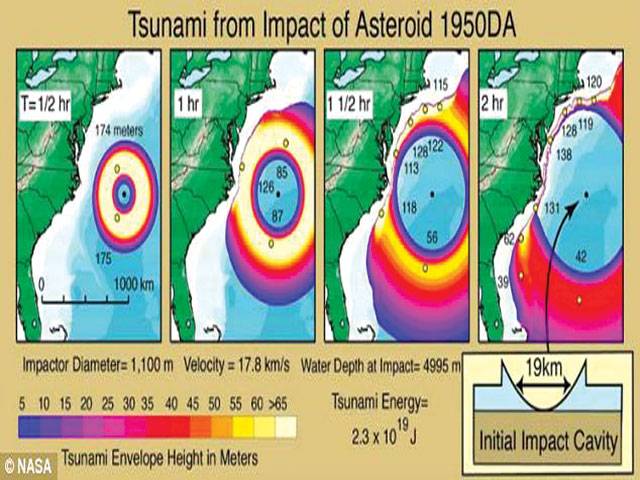DM
WASHINGOTN-Doomsday, it seems, has come and gone countless times. But one particular prediction for the end of the world has been weighing on the mind of astronomers for more than half a century.
Scientists at Nasa have been watching an asteroid, named 1950 DA, which is currently on a path to collide with Earth on March 16, 2880. Over the long timescales of Earth’s history, asteroids this size and larger have periodically hammered the planet. The so-called K/T impact, for instance, ended the age of the dinosaurs 65 million years ago. Asteroid 1950 DA was discovered on 23 February 1950. It was observed for 17 days and then faded from view for half a century. Then, an object discovered on 31 December 2000 was recognised as being the long-lost 1950 DA.
The New Year’s Eve sighting was exactly 200 years to the night after the discovery of the first asteroid, Ceres.
It was found that the asteroid 1950 DA has a trajectory that for a 20-minute window on March 16, 2880, a collision cannot be entirely ruled out. Optical observations showed the asteroid rotated once every 2.1 hours, the second fastest spin rate ever observed for an asteroid its size.
But scientists claim there is no cause for concern. If it is eventually decided 1950 DA needs to be diverted, the hundreds of years of warning could allow a method as simple as dusting the surface of the asteroid with chalk or charcoal, or perhaps white glass beads. This would change the asteroid’s reflectivity and allow sunlight to do the work of pushing the asteroid out of the way. Planetary scientists, meanwhile, are getting a better handle on the risks of asteroid impacts.
There are currently 1,400 potentially hazardous asteroids that could pass close to Earth. These asteroids are considered hazardous because they are fairly large - at least 460 feet or 140 meters in size - and will pass within 7.5million kilometres.
Nasa is currently tracking all 1,400 potentially hazardous asteroids so far identified and predicting their future close approaches and impact probabilities.
As part of this effort it is working on the development of an infrared sensor that could improve its asteroid tracking capabilities, dubbed the Near Earth Object Camera (NEOCam) sensor.
Monday, May 19, 2025
Could life on Earth end on March 16, 2880?

Israeli army begins ‘broad ground operation’ in Gaza
8:43 AM | May 19, 2025
Fund raising for Kiran Foundation held
May 19, 2025
-
Lahore emerges among safest global cities in Numbeo 2025 index
-
Lahore emerges among safest global cities in Numbeo 2025 index
-
India’s suspension of Indus Water Treaty legally baseless
-
Seventh polio case reported in Pakistan amid nationwide vaccination drive
-
Pakistan reports sixth polio case of 2025
-
PTA begins issuing VPN licences to regulate usage
Culture Shift
May 18, 2025
Tactical Shift
May 18, 2025
Unmasked Cruelty
May 18, 2025
India Isolated
May 17, 2025
Descent into Hell
May 17, 2025
Pakistan’s Strategic Edge
May 19, 2025
Lessons for India
May 19, 2025
Galiyat’s Poor Network Services
May 19, 2025
A City in Neglect
May 19, 2025
Rising Cost of Living
May 19, 2025
ePaper - Nawaiwaqt
Nawaiwaqt Group | Copyright © 2025





